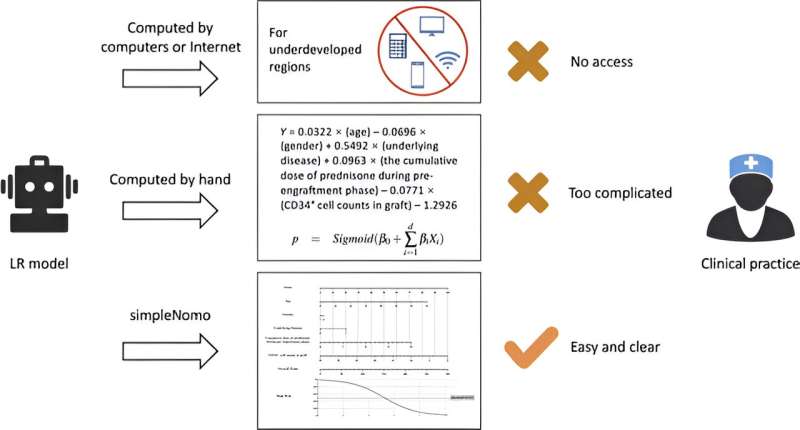This article has been reviewed according to Science X's editorial process and policies. Editors have highlighted the following attributes while ensuring the content's credibility:
fact-checked
proofread
An open-source Python toolbox of nomogram generator made available

SimpleNomo, an open-source Python Toolbox, and an online platform that generates nomograms directly from logistic regression coefficients and the range of variables are available through a recent study.
The results were published in Health Data Science.
"Logistic regression models are widely used in clinical prediction, but their application in resource-poor settings or areas without internet access can be challenging," said Haoyang Hong, author at the National Institute of Health Data Science, Peking University, Beijing, China. "Nomograms can serve as a useful visualization tool to speed up the calculation procedure, but existing nomogram generators often require raw data input, inhibiting the transformation of established logistic regression models that only provide coefficients."
"Developing a tool that can generate nomograms directly from logistic regression coefficients would greatly increase usability and facilitate the translation of research findings into patient care," said Shenda Hong, assistant professor and Hong's colleague. "Therefore, we designed and developed simpleNomo, an open-source Python toolbox that enables the construction of nomograms for logistic regression models."
Uniquely, simpleNomo allows the creation of nomograms using the coefficients and range of predictors in a logistic regression model alone as input, removing obstacles in gathering the necessary information for nomogram construction. In contrast, conventional tools do not provide an integrated toolbox or accept only inputs from models trained within a specific programming language.
This feature allows easy conversion of existing logistic regression models to nomograms that can be utilized in a broader range of clinical applications. Representing merit to clinical prediction modeling, this work may improve patient care by facilitating the translation of research findings into practical use.
The study has validated that simpleNomo properly maintains the predictive ability of the original logistic regression model and is easy to follow.
Users can access this Python 3-compatible tool by installing the Python Package Index (PyPI) or running the process via the online generator at https://github.com/Hhy096/nomogram. Users fill in the required information in the intuitive interface, similar to filling in an Excel template. Then a simple click on the "Submit" button delivers the nomograms they have developed.
The authors project their ultimate goal to turn more machine learning models into visualization tools that can be computed without computer resources .
More information: Haoyang Hong et al, simpleNomo: A Python Package of Making Nomograms for Visualizable Calculation of Logistic Regression Models, Health Data Science (2023). DOI: 10.34133/hds.0023




















